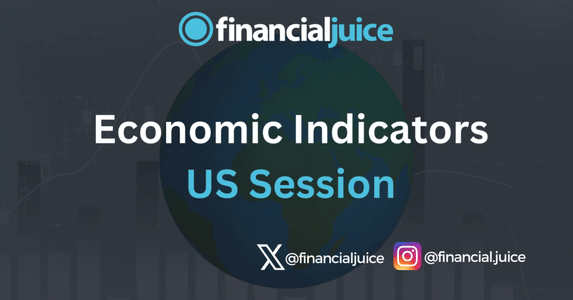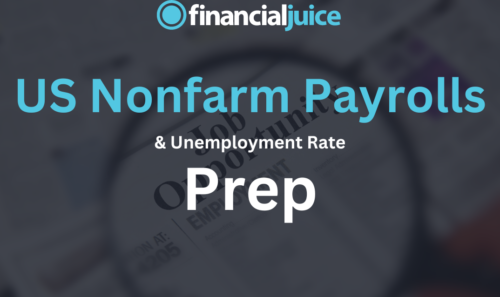
Week Ahead: Economic Indicators (US)
For the November 4th week, here is a list of the major economic indicators released during the US Session.
Monday 4th November
08:30 ET
US Factory Orders for September
US Factory Orders is a monthly economic indicator released by the US Census Bureau that measures the dollar value of new orders placed with manufacturers for both durable and non-durable goods.
Durable goods are items expected to last at least three years, like machinery and appliances, while non-durable goods include products like food and clothing.
An increase in factory orders suggests rising demand for manufactured goods, signaling economic growth, while a decrease may indicate a slowdown in manufacturing and economic activity.
What to Expect
Strength in the manufacturing sector would decrease the chances of a recession, as it underlines a resilient economy, at least in this sector, which would likely prompt strength across US assets, and the opposite would likely be true if it came in lower than expected.
Tuesday 5th November
08:30 ET
US Trade Balance for September
The Trade Balance is an economic indicator released that measures the difference between the value of the country’s exports and imports of goods and services.
A trade deficit occurs when imports exceed exports, while a trade surplus happens when exports exceed imports.
The trade balance is a key component of a country’s current account and reflects the demand for a country’s goods and services abroad as well as domestic demand for foreign goods.
It provides insights into the economic health and competitiveness in the global market and can influence exchange rates & GDP.
What to Expect
This number is unlikely to create a meaningful market reaction without a large deviation from expectations.
Having said that, a deeper than expected deficit (lower than expected number) could cause weakness across assets (dollar, stocks, and bond yields) due to its negative effect on GDP, and the opposite could be true if it comes in higher than expected.
10:00 ET
US ISM Services PMI for October
The US ISM Services PMI is a monthly index released by the Institute for Supply Management that measures the economic activity of the US services sector, which includes industries like finance, healthcare, and retail.
It is based on surveys of purchasing managers and covers key factors like business activity, new orders, employment, and supplier deliveries.
As a diffusion index, a reading above 50 indicates expansion in the services sector, while a reading below 50 signals contraction.
What to Expect
Markets tend to take note of this release, as the ISM participants in the survey make up some of the largest US companies in their sector, invited based on their contribution to US GDP.
With employment in focus at the moment, we expect the markets will be paying attention to the Employment Index component in this report for any clues on the US jobs market.
Lower-than-expected employment would be likely to cause weakness across the US assets (dollar, stocks, and bond yields) while stronger employment could cause the inverse.
As for the headline Services PMI number, the markets will be balancing between reacting to the data’s effect on monetary policy, and its effect on the broader economy, though we expect a higher number could be seen as an upside risk to inflation, as the service sector has been noted as an inflationary headwind by FOMC officials.
This means a higher-than-expected services PMI could cause weakness in US stocks, and strength in the dollar and government bond yields, and the inverse could cause strength in stocks and weakness in the dollar and government bond yields.
Wednesday 6th November
10:30 ET
US Weekly EIA Crude Oil Inventories
The US Weekly EIA Crude Oil Inventories report, released every Wednesday by the Energy Information Administration, details the amount of crude oil held in storage across the United States.
It provides insights into the supply and demand dynamics of the oil market.
What to Expect
An increase in inventories suggests higher supply or lower demand, potentially leading to lower oil prices. Conversely, a decrease indicates lower supply or higher demand, which can drive prices up.
13:30 ET
BoC Meeting Minutes
The Bank of Canada Meeting Minutes are detailed records from the Bank of Canada’s policy-setting meetings.
They summarize discussions among policymakers about economic conditions, inflation, employment, and financial stability, which shape their interest rate decisions.
These minutes provide insights into the central bank’s views and potential future policy direction, helping markets understand the rationale behind rate changes or stances on monetary policy.
What to Expect
If the BoC minutes are hawkish (indicating fewer BoC rate cuts), we would be likely to see strength in CAD and CA bond yields, and weakness in Canadian stocks.
If the BoC minutes are dovish (indicating willingness to greater BoC cuts), we would likely see strength in CA stocks and weakness in CAD and CA bond yields.
Thursday 7th November
08:30 ET
US Weekly Initial & Continued Jobless Claims
The US Weekly Initial & Continued Jobless Claims report tracks unemployment insurance claims to gauge the health of the job market. Initial claims measure the number of people filing for unemployment benefits for the first time, indicating new job losses.
Continued claims reflect the number of individuals who remain unemployed and are still receiving benefits after their initial filing.
Together, these metrics provide timely insights into labor market conditions and potential economic shifts.
What to Expect
With employment in focus at the moment, this report has been garnering a lot of market attention.
A higher jobless claims number, indicating higher unemployment, would be likely to cause weakness across the US assets (dollar, stocks, and yields), as it feeds into the narrative of a hard landing/broader economic slowdown for the US economy as we come out of the tightening cycle.
A lower jobless claims number, indicating lower unemployment, would be likely to cause strength across the US assets, as it reassures the markets that the US economy may be able to exit the tightening cycle and enter the easing cycle without a recession/broader economic slowdown.
Keep in mind that there has been some volatility in the US equity markets reaction to this data point, as the markets are fighting between the data’s indicator on the broader economy, as well as the potential future impact the data has on monetary policy.
14:00 ET
US Interest Rate Decision
The US Interest Rate Decision is a policy announcement by the Federal Reserve, typically following its Federal Open Market Committee (FOMC) meetings.
The decision reveals whether the Fed will raise, lower, or maintain the federal funds rate, which influences the cost of borrowing throughout the economy.
This rate is a primary tool for managing inflation and economic growth, with increases aiming to cool inflation and decreases intended to stimulate economic activity.
Markets closely watch this decision, as it impacts everything from loan rates to investment returns and economic growth projections.
What to Expect
Median expectations expect a 25 bps rate cut from the Fed at this meeting, from 5% to 4.75%.
If realized, attention will turn to the rate statement, which is released at the same time. It will be scanned for clues on the future of US policy and what areas of the economy the Federal Reserve is considering when making its policy decisions.
If rates are left unchanged, however, US stocks would be likely to weaken, the dollar and bond yields would be likely to strengthen.
If it comes in as expected (25 bps cut), and the rate statement is hawkish (indicating fewer Fed rate cuts), we would be likely to see strength in the dollar and bond yields, and weakness in US stocks.
If we see a dovish rate statement (indicating willingness to greater Fed cuts), we would likely see strength in US stocks, and weakness in the dollar and bond yields.
Friday 8th November
08:30 ET
Canadian Employment Change for October
The Canadian Employment Change report measures the monthly change in the number of employed people in Canada, indicating job growth or loss.
Released by Statistics Canada, it is a key labor market indicator, affecting economic policy and reflecting the health of the Canadian economy.
Increases in employment signal economic strength, while declines may indicate slowing economic activity.
What to Expect
If the the Canadian employment change comes in higher than expected, this could cause weakness in Canadian stocks, and strength in CAD, as it would indicate that deeper rate cuts from the BoC may not be needed in order to stimulate the jobs market, if ti comes in lower than expected, the opposite could be true.
10:00 ET
University of Michigan Sentiment Survey
The University of Michigan Sentiment Survey is a monthly report that measures US consumer confidence and economic sentiment.
Conducted by the University of Michigan, it surveys households on their views about personal finances, business conditions, and purchasing power.
The index provides insights into consumer optimism or pessimism, helping to predict consumer spending trends. Higher sentiment readings indicate positive consumer attitudes, while lower readings may signal economic concerns.
What to Expect
A higher read on consumer confidence would help quell fears of an economic slowdown or recession, which would be bullish for US assets (stocks, dollar and bond yields).
The opposite would likely be true if it comes in lower than expected.
This report also holds an inflation expectations component.
If inflation expectations come in higher than expected, this could cause weakness in US stocks, and strength in the dollar and bond yields, as it increases the chances that rates may not be cut as fast as previously expected.
If the inflation expectations come in lower than expected, we would expect the opposite to be true.





